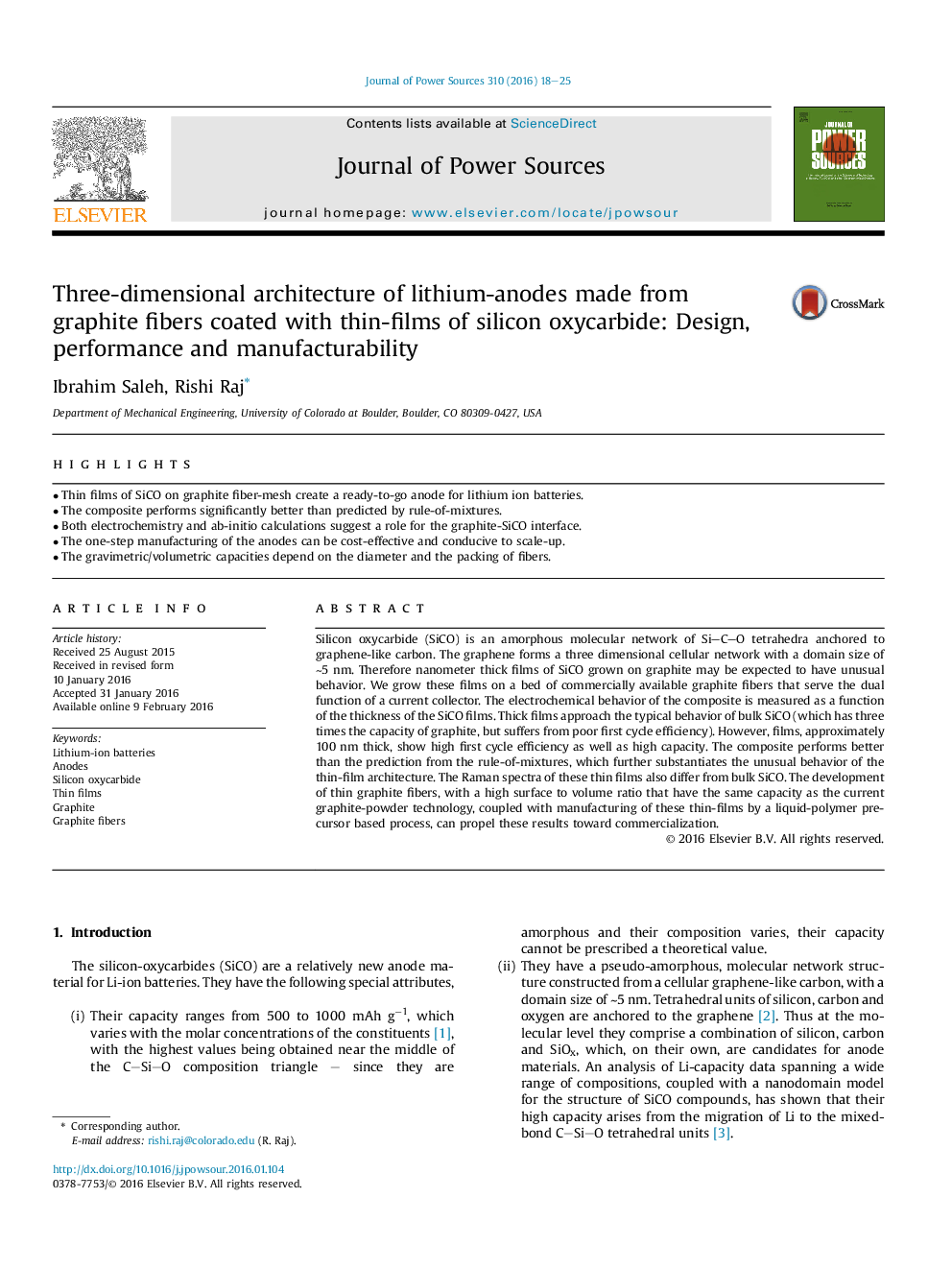| Article ID | Journal | Published Year | Pages | File Type |
|---|---|---|---|---|
| 7728530 | Journal of Power Sources | 2016 | 8 Pages |
Abstract
Silicon oxycarbide (SiCO) is an amorphous molecular network of SiCO tetrahedra anchored to graphene-like carbon. The graphene forms a three dimensional cellular network with a domain size of â¼5Â nm. Therefore nanometer thick films of SiCO grown on graphite may be expected to have unusual behavior. We grow these films on a bed of commercially available graphite fibers that serve the dual function of a current collector. The electrochemical behavior of the composite is measured as a function of the thickness of the SiCO films. Thick films approach the typical behavior of bulk SiCO (which has three times the capacity of graphite, but suffers from poor first cycle efficiency). However, films, approximately 100Â nm thick, show high first cycle efficiency as well as high capacity. The composite performs better than the prediction from the rule-of-mixtures, which further substantiates the unusual behavior of the thin-film architecture. The Raman spectra of these thin films also differ from bulk SiCO. The development of thin graphite fibers, with a high surface to volume ratio that have the same capacity as the current graphite-powder technology, coupled with manufacturing of these thin-films by a liquid-polymer precursor based process, can propel these results toward commercialization.
Related Topics
Physical Sciences and Engineering
Chemistry
Electrochemistry
Authors
Ibrahim Saleh, Rishi Raj,
